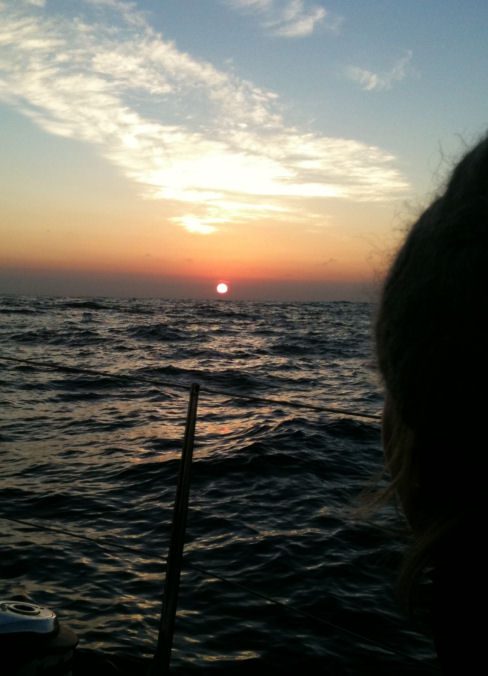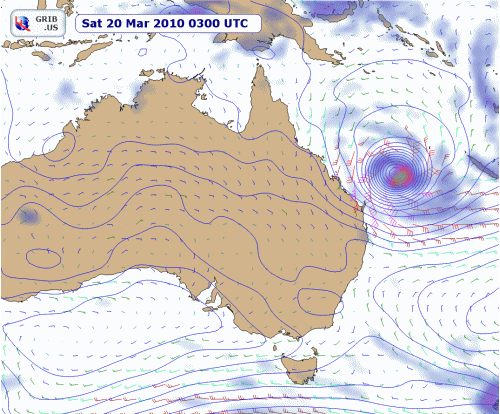One last challenge remained as I made my way to St Helens yesterday: the Georges Bay barway. Early morning I contacted Tamar Sea Rescue and asked about the state of the bar. If it was expected to be impassable I wanted the option to still divert to Flinders Island
They called up St Helens who advised that they would not give instructions but would send a rescue boat out to lead me across the bar.

St Helens / Georges Bay Bar
I felt fairly comfortable as the day progressed, having done several bar crossings in the last couple of years, some in breaking surf. My apprehension grew, however, as the day wore on. By 1500 it was blowing 25 knots from the north-east again, directly onto the bar, and I was dog tired. The Marine Rescue also indicated that they would inspect the bar and only take me through if the conditions were safe. The likelihood of safe conditions was reducing with the rising wind and I couldn’t bear the thought of another 10 hours sailing, in the dark, to get to the anchorage at Wineglass Bay.
The Marine Resque RIB arrived within minutes of my arrival in Georges Bay and they weren’t happy: the tide was late (still rising) and the bar was breaking in a mass of white water.
We agreed that I would cross at my own risk. By that stage I had doused all the sails, had my lifejacket on and had the boat closed up in case we got swamped by the surf or thrown on our beam ends.
As we went for the bar I suddenly felt a lot of vibration, and realized I’d picked up some kelp on the prop. I stopped the engine, put her in reverse to fold the prop, and restarted. Gunning her in reverse I felt the familiar smooth running and knew the kelp had been cleared. Then it was full throttle behind the rescue boat. Crossing the breaking surf was relatively easy – I only surfed down one breaking wave and then we were in the calm water of the river. What a relief. I then ‘bumped’ my way past Pelican Point in slightly less than 6ft of water, closely following the rescue boat.
The Marine Rescue organisations are entirely self funded institutions, operated by volunteers . Chatting with Ian Hollingsworth at the base later I was amazed to learn that they help around 100 boats annually that get into all sorts of trouble (2 to 3 times a week), sometimes towing boats in from over a 100 miles away. Needless to say I was only too happy to make a donation to help them continue the great work.




